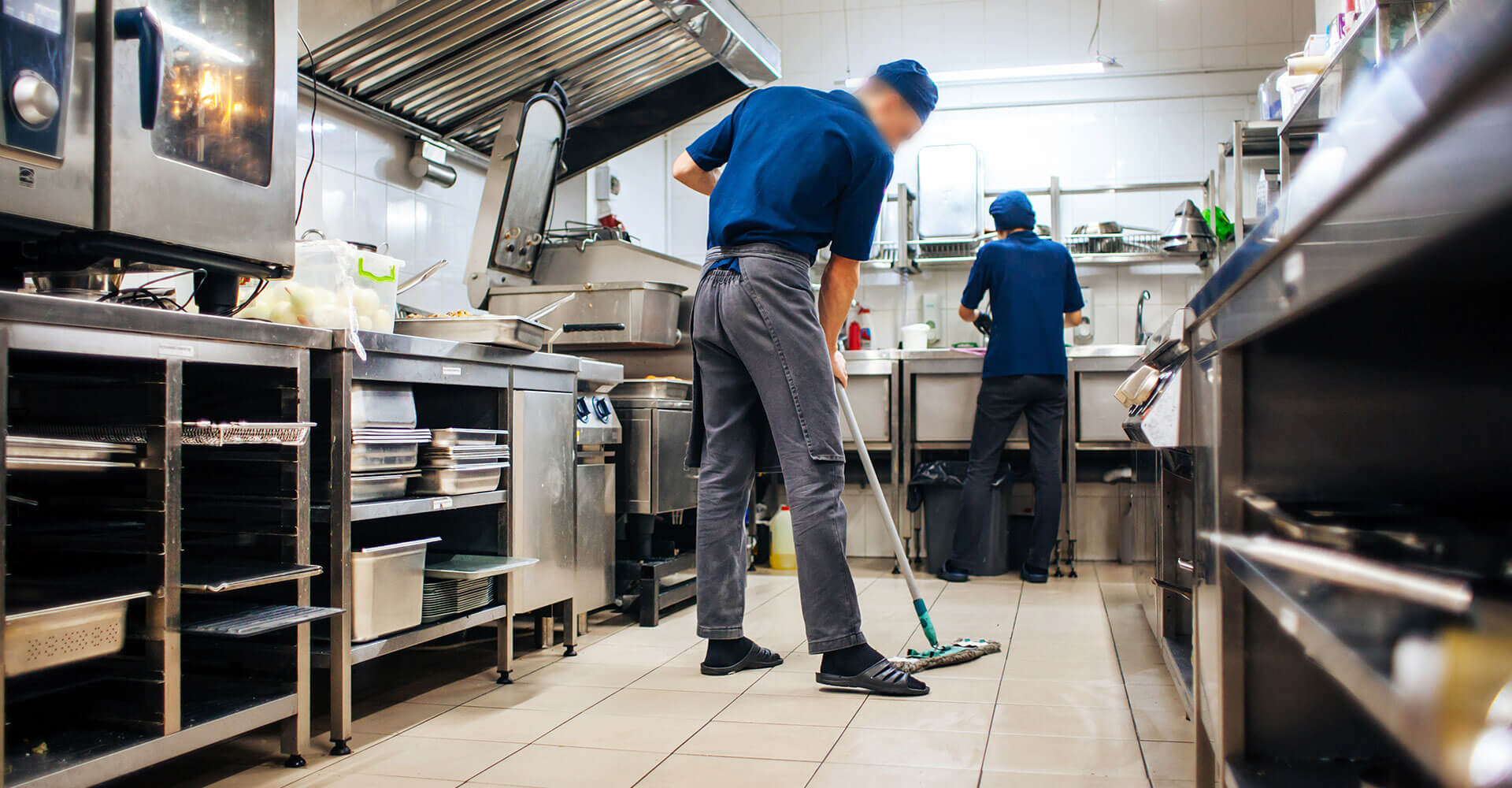
We can help you clean all of your kitchen equipment, but to have a truly clean kitchen you can’t forget about the floor. Read on for some advice from restaurant-hospitality.com.
Energy is low by the time your back-of-the-house staffers reach the end of a long shift, often causing routine kitchen clean-up tasks to be performed with less enthusiasm than they deserve. That’s why it’s important that operators periodically check to ensure that employees pay attention and adhere to best practices when performing these tasks.
The issue, says cleaning equipment manufacturer Powr-Flite’s Mike Englund, is that foodservice floors must be hygienically maintained to protect the health of restaurant patrons as well as to meet health codes and regulations. It’s a high standard in a tough environment, and Englund offers these tips that can help operators meet it:
1. Before cleaning foodservice floors, make sure floor drains are unobstructed and working properly.
2. Foodservice floors, which are typically quarry or ceramic, should be sealed with a low- or anti-slip coating to foster proper sanitation and reduce the possibility of a slip-and-fall accident.
3. All floor care work should be performed before food handling/processing equipment is cleaned; this helps prevent floor soils and debris from becoming airborne and landing on workstations or equipment.
4. If using mops and buckets, they should be cleaned/changed daily. Soiled mops and buckets can spread contaminants across the floor, increasing contamination concerns.
5. A squeegee should be used to move moisture into floor drains for quicker drying.
6. A 175-rpm buffer should be used at least once per week, or daily if necessary, to loosen soils, grease and oil that may build up on floors. Use a blue or green scrubbing pad along with a 17-inch or 20-inch floor machine; a smaller machine can better maneuver in and around counters and cooking areas in a foodservice kitchen.
7. Mops, buckets, squeegees, chemicals and all floor care equipment should be stored off the ground on shelves or racks. This helps keep the equipment clean and deters pests.
Pay attention to how your clean-up personnel handle your kitchen mats, too.
“Many foodservice kitchens now use approved antifatigue mats to help prevent slip-and-fall accidents and worker fatigue,” says Englund. “It’s very important that mats be cleaned and sanitized at closing, allowing them to air dry before the facility reopens.”
To find out more about how we can help you get your kitchen equipment clean, visit our benefits page.
Copyright© 2025, FOG Tank Canada Inc., All Rights Reserved